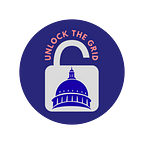Reaganomics VS Populism: Are the Rich Our Friends or Foes
Populism has been thrown around a lot recently by people on both sides of the aisle, but what is it, and how does it compare to Reaganomics?
What is Populism?
Populism is a movement, both political and economic, that attempts to move away from the idea of elitism and appeal to the ordinary person. Populist politics, following this definition, revolves around a charismatic leader who appeals to and claims to embody the will of the people to consolidate their own power. In this personalized form of politics, political parties lose their importance. Elections serve to confirm the leader’s authority rather than to reflect the different allegiances of the people. In the second half of the 20th century, populism came to be identified with Latin American leaders’ political style and programs, such as Juan Perón, Getúlio Vargas, and Hugo Chávez. In the early 21st century, populist authoritarian regimes arose in Turkey, Poland, and Hungary, among other countries.
Populism in the US
However, the version of economic populism that we see in America is more subtle and not nearly as dangerous. US populism often involves politicians who alienate the “elites” in society from the middle and working class. We can see this phenomenon with Republicans like President Donald Trump and with Democrats like Senator Bernie Sanders. For example, Trump usually references the “deep state elites,” while Sanders talks about billionaires and the “1%.” These terms create a common enemy: a group of people who are partially responsible for the struggles of the working class. This shift to populist economic platforms is recent and quite different from the economics of the 80s.
Reaganomics
Reaganomics, the economic policies President Ronald Reagan promoted during his presidency, centered around limiting government intervention and spending across the board. This Laissez-Faire approach led to the top income tax bracket being cut from 70% to 28% within Reagan’s eight years as president. Reagan also cut the lowest income tax bracket from 14% to 11%, which directly helped the lower class. Many social welfare programs, such as food stamps, experienced significant cuts in funding to sustain these tax cuts. Given the recent rise of populism, will Reaganomics make a popular return as well?
During Reagan’s administration, he appealed to regular Americans by promising tax cuts and prosperity, but he didn’t blame the wealthy or the elite for everyday Americans’ problems. For example, he helped popularize the idea of “trickle-down economics,” a theory that giving significant tax cuts to the wealthy will benefit the middle class. Reagan’s charismatic nature helped make the rich seem like a friend of the regular people instead of an enemy of the people — the stark distinction between economic populism and Reaganomics.
Where are we now?
With the onset of both these philosophies over the past 40 years, the real question is where does that leave us now? The answer is it’s complicated.
Reaganomics has dominated economic policy over the past 40 years and has been met with mixed results. We have seen some of the most prosperous economic times in our history as well as some of our largest recessions. We have seen unprecedented individual and corporate wealth, especially in industries like Tech, that has continued to keep America powerful, yet we’ve also seen continued growth in income inequality with the income of top earners increasing at a higher rate than that of middle and lower class earners. Due to this growth, it cannot be denied that a larger Populist movement is happening within both parties and within the voter base on both sides which leads to the conclusion that at some point we will see some more Populist style policies from both sides. We would have to look back at the New Deal to see an era where those policies were prioritized, but it’s tough to think those effects would be comparable to the modern economy and is a topic for another full blog post. Where this leads the country in the modern era of economics is unclear, but it seems we may find out soon.
